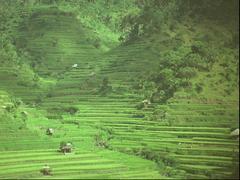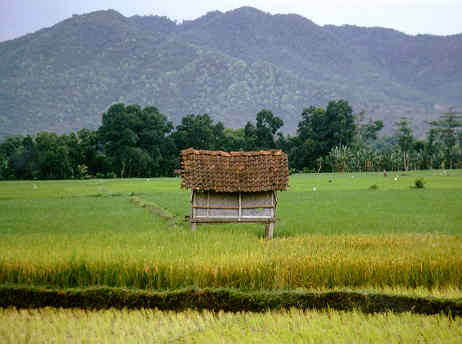|
Gunung Gede Pangrango National Park is a
combination of several former protected areas: Cibodas Nature
Reserve; Cimungkat Nature Reserve; Situgunung Recreational
Park and Gunung Gede Pangrango Nature Reserve. The park comprises
an area of only 15,000 ha which makes it one of the smallest
national parks in Indonesia. It is named after the two volcanoes
in the park: Gunung Gede (2,958 m) and Gunung Pangrango (3,019
m). The Gunung Gede is still active. Its last eruption took
place in 1957. Gunung Gede Pangrango National Park comprises
a variety of landscapes. Although small the site has beautiful
waterfalls, lakes and rivers, rugged volcanic landscapes,
quiet alms, montane swamp and tropical mountain forest. On
the heigher grounds there are vast alpine grassy areas. Adjacent
to the park lies Kebun Raya Cibodas, an annex of Indonesia's
famous Kebun Raya Bogor. Permits and guids are available from
the PHPA office at the main entrance. For the permit you need
a copy of your passport. Guides are not really neccesary because
Gunung Gede Pangrango National Park has an extensive web of
foot-paths. If you want to trek through the area or climb
one of the mountains you need a special permit, available
at the PHPA offices in Cibodas, Selabintana or Gunung Putri.
The park is best visited during the dry season: May-October.
From Januari till March the park is closed.

Flora
Most of the park's flora is comparable to that of the Gunung
Halimun National Park. Only around the craters of Gunung Gede
and Pangrango the flora is very different. Due to poisonous
volcanic gasses only plants adapted to this kind of environment,
such as Myrsine avensis, Rhododendron javanicum, R. retusum,
Selliguea feeiand Vaccinium varingiaefolium will grow here.

|

